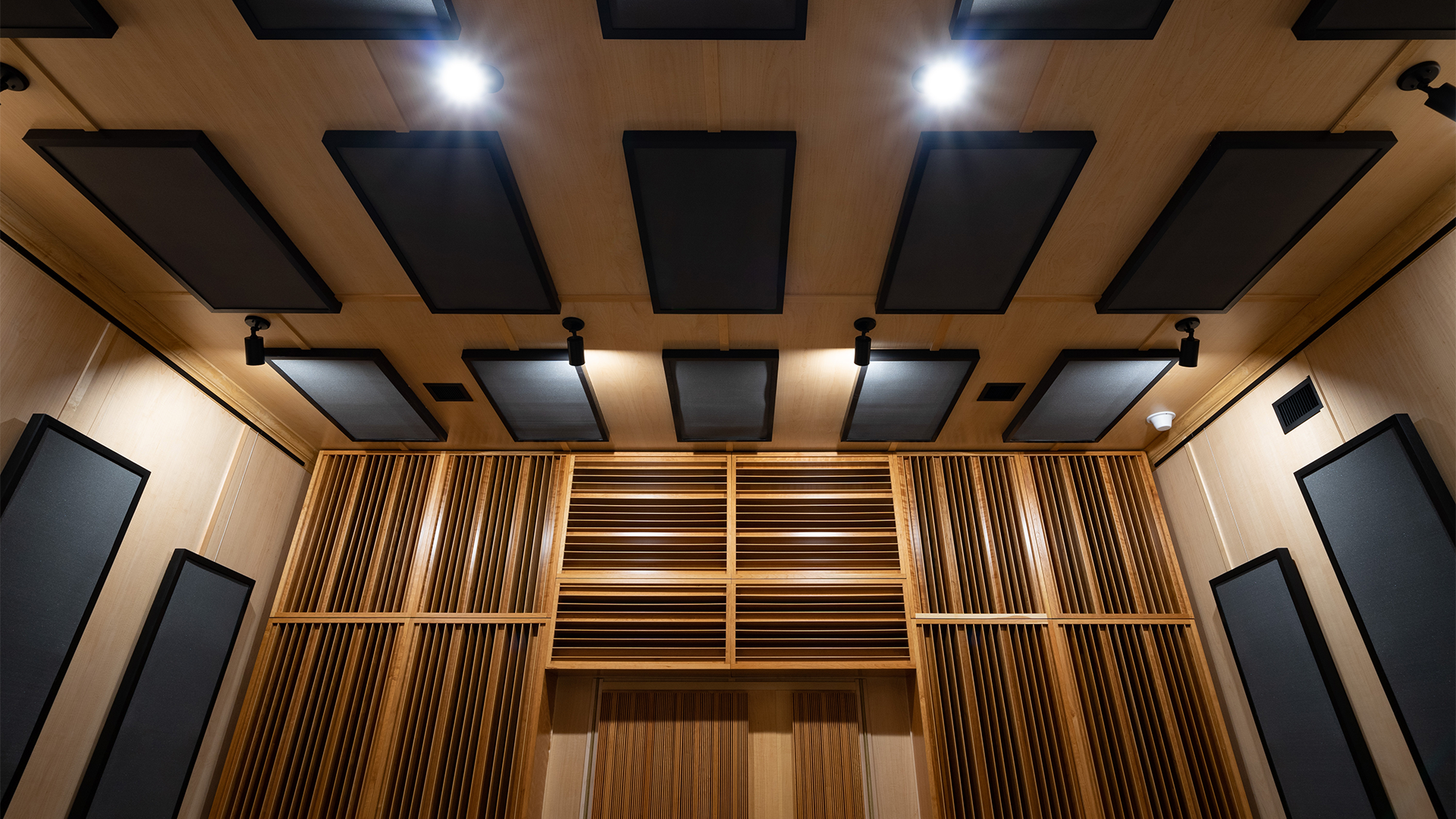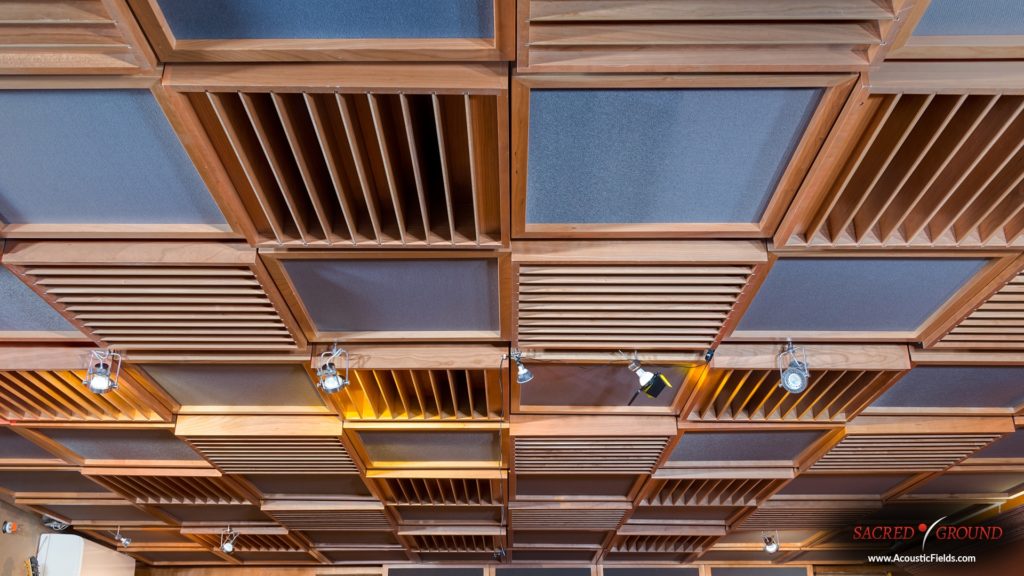
What are alternatives to drop ceilings? Let’s define the term dropped ceiling as our starting point. A dropped ceiling is cosmetic in nature. It is designed to cover up ductwork, cables, and any other material types that people do not want to constantly see. They have no real acoustic function. Companies will claim the sound absorption benefits of a 1/2″ thick piece of fiberboard but these claims are more about marketing to the uniformed than real acoustic science. No material that is 1/2″ deep will not do anything for low frequency management nor middle and high frequency absorption no matter what the companies claim are. The best ceiling in a room is the one that deals with the critical surface issues within the room and also considers the usages that will be implemented within the room. It can be either absorption or diffusion.
https://www.acousticfields.com/quadratic-diffusion-diffused
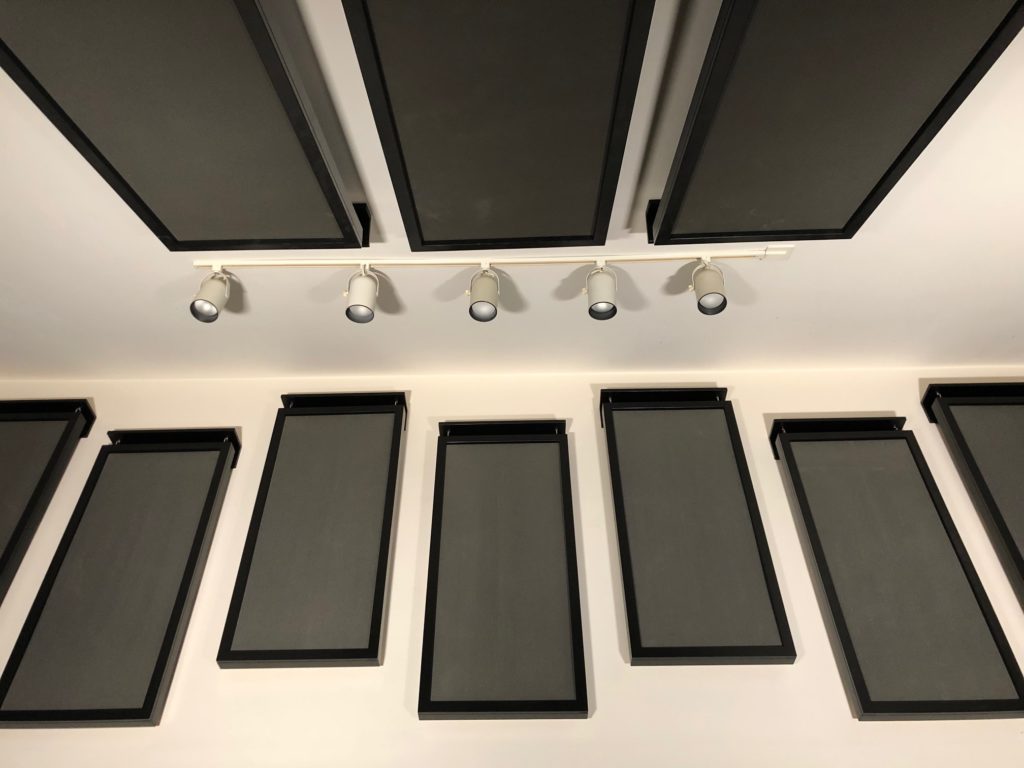
There are three room dimensions and three sound fields within a room. We have the width dimension which produces the sidewall/sidewall soundfield. The ceiling height which produces the floor/ceiling sound field. Finally, we have the length dimension which produces the front/rear wall sound field. All three sound fields must be treated with low frequency sound absorption material types. Since the height dimension is usually the shortest of all three dimensions, it can produce the largest distortions. In any critical listening room, the alternative to drop ceiling is to install the proper rate and level of absorption for lower frequency issues. In most ceiling constructions, it is possible to integrate the absorption technology into the ceiling so you won’t see it. You can also use a combination of absorption and diffusion as an alternative to drop ceiling system.
http://whealy.com/acoustics/sound_fields.html
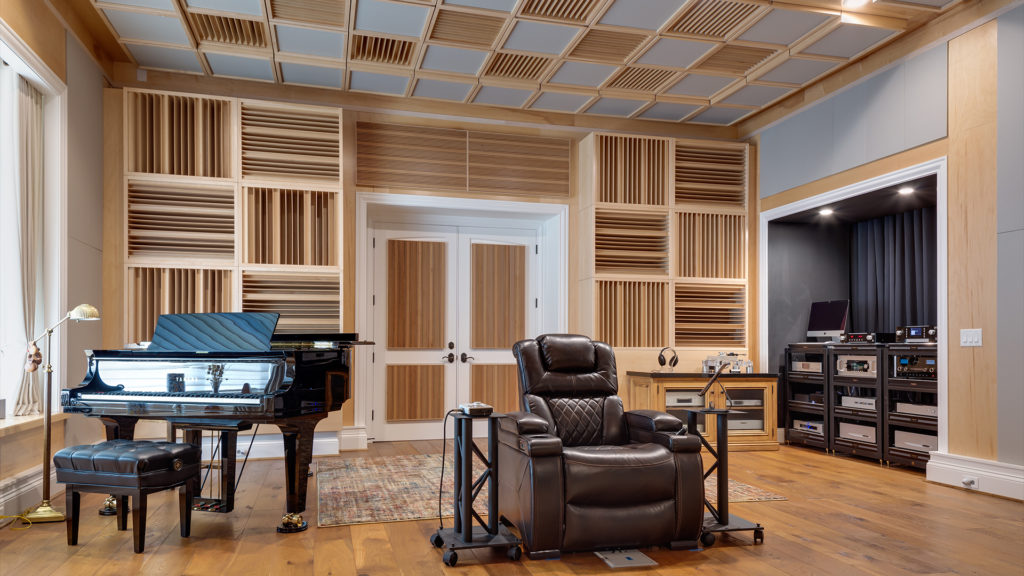
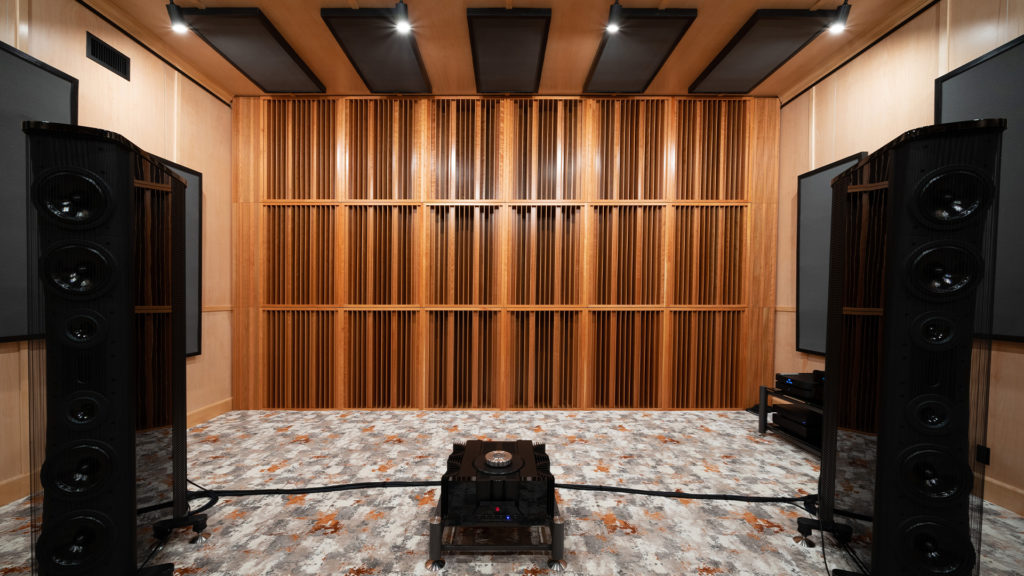
Inside our rooms, we have two main issues to address. We must manage the low frequency energy that does not fit into our room dimensions. The treatment for these lower frequency issues has two methodologies: You can build our carbon technology into the wall using our CAW system.
https://www.acousticfields.com/carbon-absorber-wall/
If building it into your walls is not an option, you can have a series of freestanding units within the room and along each wall. Each wall surface area will require a specific square footage of coverage to treat the lower frequency and amplitude modal issues. Along with low-frequency management, come the middle and high frequencies where voice lies. This process is termed speech intelligibility and is impacted by high reverberation times.
https://en.wikipedia.org/wiki/Reverberation
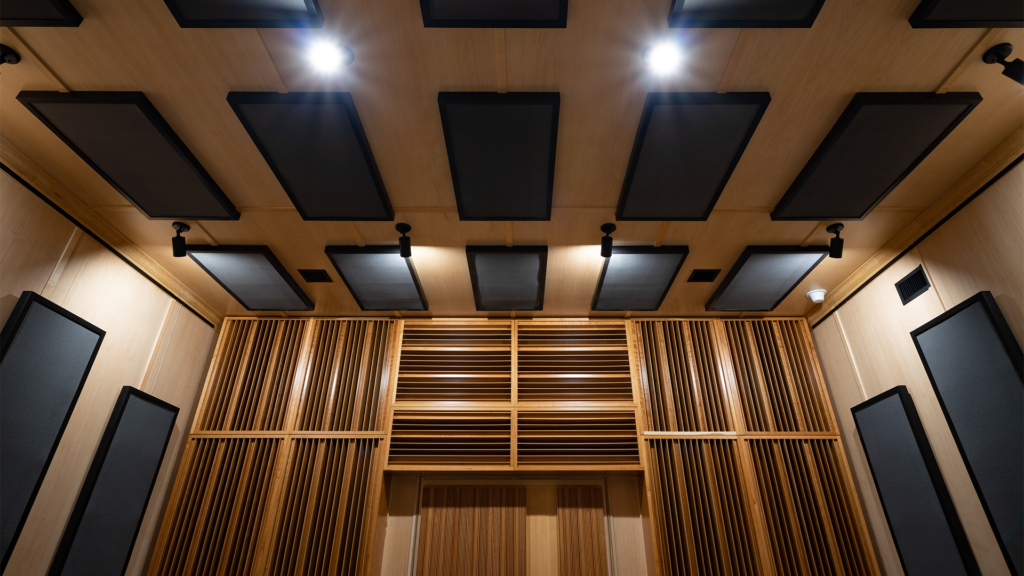
Reverberation is defined as how long a sound stays around within the room after it has been sung, spoken or played. Reverberation is not echo. Echo is a repeating signal usually over distance. Reverb is the summation of all the reflections from the room’s six surface areas. Each wall, floor, and ceiling contribute approximately 17 % to the total reverb times within our rooms. As is the case with lower frequency treatment, the key to treating high reverb times within rooms is to cover the four walls and sometimes the ceiling with the proper rate and level of absorptive material. Diffusion will increase reverberation times. You must stay with absorption to lower Rt-30/60 times. You must not only use the proper rate and level of absorption for voice, you must make sure you cover enough surface area coverage to have a positive impact on the overall reverb times. The lower the reverb times, the better speech intelligibility.


